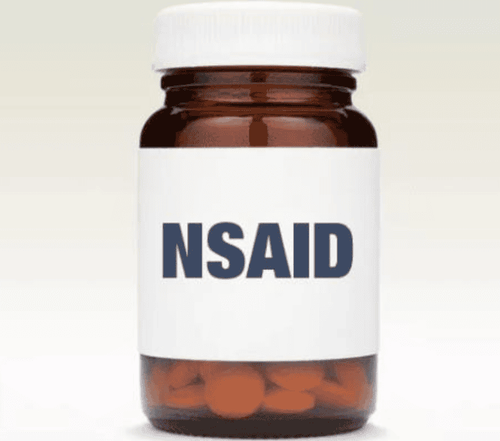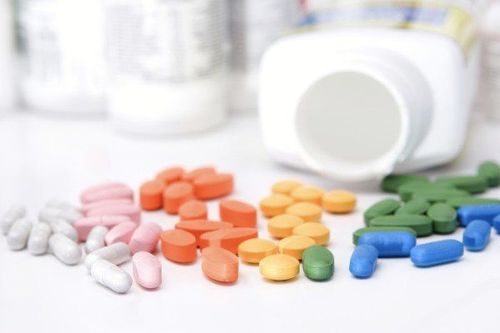This is an automatically translated article.
Tramadol is a narcotic-like pain reliever used to treat moderate to severe pain in adults. The extended-release form of tramadol is used to treat pain that develops around the clock but is not a first-line drug of choice for analgesia.
1. Uses, indications and usage of Tramadol HCL ER
Tramadol HCL ER is used to help relieve severe pain going on inside the body. Tramadol has properties similar to opioid analgesics. The way drugs work in the brain is to change the way the body perceives and responds to pain.
Tramadol HCL ER is a nerve pain reliever that is taken on a regular schedule as prescribed by your doctor, usually once daily (every 24 hours). If you are prone to nausea while taking this medicine, you can take this medicine with food. Also, try other ways to reduce nausea, such as lying down for 1 to 2 hours with as little head movement as possible.
Dosage is based on medical condition and response to treatment. To reduce the risk of side effects, your doctor may direct you to start at a low dose and gradually increase the dose. Accordingly, it is necessary to follow the doctor's instructions carefully. Do not increase your dose, take it more often, or take it for a longer time than prescribed. Discontinue medication properly when directed.
Before you start using this medicine, ask your doctor or pharmacist if you should stop or change the way you take other opioid medicines. Other pain relievers (such as acetaminophen, ibuprofen) may also be prescribed. As such, ask your doctor or pharmacist about using tramadol safely with other medications.

Cần hỏi bác sĩ khi muốn sử dụng chung Tramadol HCL ER với các loại thuốc khác
Although tramadol is generally helpful for many people, it can sometimes be addictive. This risk may be higher if the person has a stimulant use disorder (such as drug/alcohol abuse or addiction). Therefore, it is necessary to take tramadol exactly as prescribed to reduce the risk of addiction.
2. Notes when using tramadol
Possible adverse effects from taking the drug are nausea, vomiting, constipation, sweating, trouble sleeping, dry mouth, fatigue, lightheadedness, dizziness, drowsiness or headache. Some of these side effects may decrease after you have used this medicine for a while. If any of these effects persist or get worse, tell your doctor or pharmacist.To prevent constipation, eat enough fiber, drink enough water and exercise. You may also need to take a laxative. However, always remember that your doctor prescribes this medicine after he has judged that the benefits outweigh the risk of side effects. Most people using this medicine do not experience serious side effects.
However, tell your doctor if you have any serious side effects, including: interrupted breathing during sleep (sleep apnea), mental/mood changes (such as agitation, hallucinations), severe stomach/abdominal pain, difficulty urinating, signs of an underactive adrenal gland (such as loss of appetite, unusual tiredness, weight loss).
Tramadol can increase serotonin and rarely cause a very serious condition called serotonin syndrome/toxicity. The risk increases if the person is also taking other medications that increase serotonin. At the same time, t ramadol is converted into a strong opioid drug in the body. In some people, this change happens faster and more aggressively than usual, increasing the risk of very serious side effects.

Các tác dụng phụ của thuốc có thể giảm sau khi sử dụng một thời gian
3. Precautions for side effects
Before using this medication, tell your doctor or pharmacist your medical history, especially of: brain disorders (such as head injury, tumors, epilepsy), breathing problems (such as asthma, sleep apnea, chronic obstructive pulmonary disease (COPD), kidney disease, liver disease, mental/mood disorders, substance use, gastrointestinal dysfunction.This medicine may make you dizzy or drowsy. Alcohol or marijuana can make dizziness or drowsiness worse. Therefore, do not drive, use machines, or do anything that requires alertness until you feel your body can do it safely. Avoid alcoholic beverages.
Tramadol may cause a condition that affects heart rhythm (QT prolongation). However, the risk of QT prolongation may be increased if the patient also has certain medical conditions or is taking other drugs that can prolong QT. Before using tramadol, tell your doctor or pharmacist of all medications you are taking and if you have any heart conditions such as heart failure or arrhythmia.
Low levels of potassium or magnesium in the blood can also increase the risk of QT prolongation. This risk may be increased if certain medications are used (such as diuretics) or if you have conditions such as excessive sweating, diarrhea, or vomiting.
Some children may be more sensitive to the very serious side effects of tramadol, such as drowsiness, confusion, or slow/shallow/noisy breathing. Furthermore, older adults may also be more sensitive to the side effects of this drug, especially confusion, dizziness, drowsiness, slow/shallow breathing, and QT prolongation (see above). Older adults may also be more prone to salt imbalance (hyponatremia) while using this medicine.
During pregnancy, it is best not to take the drug because it can harm the unborn baby. Tramadol also passes into breast milk and may have unwanted effects on a nursing infant, such as unusual sleepiness, difficulty feeding or breathing.

Không nên sử dụng Tramadol HCL ER trong thai kỳ
4. Drug interactions
Some products that may interact with this drug include: some pain medications (mixture of opioid agonists such as pentazocine, nalbuphine, butorphanol), naltrexone, MAO inhibitors (isocarboxazid, linezolid, methylene blue, moclobemide, phenelzine, procarbazine, rasagiline, safinamide, selegiline, tranylcypromine) during treatment with tramadol.
Other drugs may affect the removal of tramadol from your body, which may affect how tramadol is metabolized in the body. Therefore, it is necessary to consult with your doctor, pharmacist about the possibility of drug interactions if you are using other drugs.
In summary, Tramadol HCL ER is a moderate to severe pain reliever for pain that is persistent and unresponsive to conventional analgesics. Because the mechanism of analgesic action affects the central nervous system, it is necessary to have close monitoring during drug use as well as early correction of side effects, if any, in order to achieve optimal treatment effect.
Any questions that need to be answered by a specialist doctor as well as customers wishing to examine and treat at Vinmec International General Hospital, please register for an online examination on the Website for the best service.
Please dial HOTLINE for more information or register for an appointment HERE. Download MyVinmec app to make appointments faster and to manage your bookings easily.
Reference source: webmd.com












